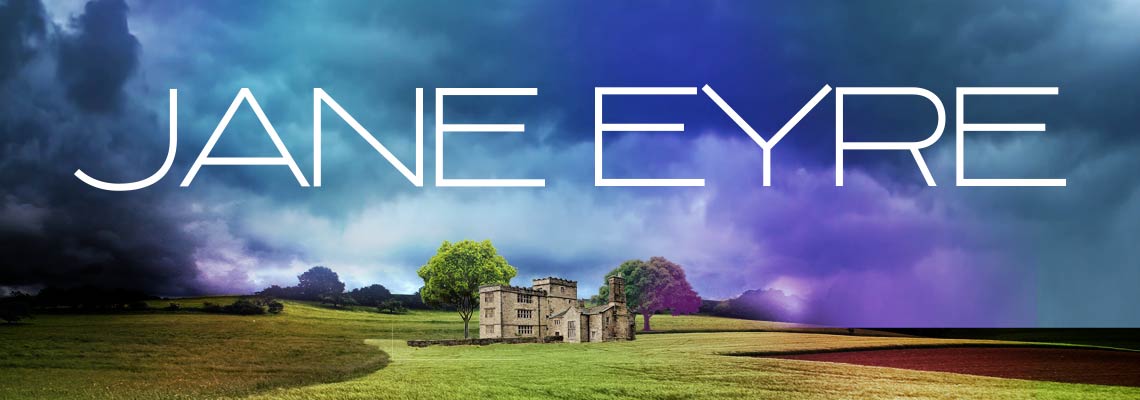
Inhabiting the Gothic in Jane Eyre
By Fiona Kyle, Dramaturg
The protagonist of Charlotte Brontë’s Jane Eyre inhabits, as the author herself did, a world that is Victorian yet deeply imbued by the Gothic. Jane’s “autobiography” concerns itself both with Victorian morality and Gothic horror. Jane contemplates Victorian society’s mores while considering what is and is not truly moral. She finds herself surrounded by Gothic horror: the mysteries she faces may be supernatural or based in a sinister reality. Andrew Smith writes in Gothic Literature that the “Gothic […] focuses on thoughts and feelings.” Brontë wrote the story of Jane as if she were writing her life’s history; throughout she addresses us directly, her dear Readers, with her innermost thoughts and feelings, telling her story in her own way.
Gothic as a literary form, generally thought to have emerged in 1764 with Horace Walpole’s The Castle of Otranto and its subtitle “A Gothic Story”, features the familiar tropes of gloomy castles or mansions, supernatural hauntings, and sometimes a sensual Byronic hero or anti-hero. In the second wave of Gothic literature, which includes 1818’s Frankenstein by Mary Shelley, the supernatural began to include the scientific. For instance, physiognomy, the study of a person’s face to determine their characteristics, which may seem like a fortune-teller’s art to us now, was considered by some to be fact. It was frequently employed by other nineteenth century writers, such as Honoré de Balzac and Charles Dickens, when describing their characters.
Jane witnesses what could be perceived as supernatural in her world. She endeavors to find credible sources, even when she sometimes appears to others, including herself, as otherworldly. As an orphaned young woman with no recollection of her parents, she could easily be a changeling, left by the fairies who had stolen a human child and replaced it with her. As Andrew Smith writes, “Gothic permeates [Jane Eyre] by turning commonplace phenomena […] into symbolic reason.” In moments of great distress or confusion, Jane finds herself seeking the sight of and receiving guidance from the moon which, as Adrienne Rich writes in Jane Eyre: The Temptations of a Motherless Woman, is the “symbol of the matriarchal spirit.”
Jane’s Gothic-imbued world is comprised of mysterious manors and halls that hold terrors, whereas sprawling roads and fields offer exercise, delight, and solace. As a young child, Jane receives the punishment of being locked into what was known as “the red room” at Gateshead Hall. As Madeleine Wood writes in Enclosing Fantasies, “[Her] gothicized episode in the red room […] represents an enclosure within patriarchy.” The rich buildings she occupies throughout Jane Eyre, from Gateshead to Thornfield Hall, have been owned by men. Jane flourishes outside and in dwellings that have returned to nature, places that never had or no longer belong to men. In fact, when a Byronic-styled hero first encounters her, he abruptly falls off his horse as she looks at the moon. Charlotte Brontë seems to suggest that nature is the dominion of women where men have little or no power.
The critical reception Jane Eyre received seemed to pick up on the proto-feminist leanings of its author. Elizabeth Rigby wrote in The Quarterly Review, “Jane Eyre is throughout the personification of an unregenerate and undisciplined spirit,” and that her “autobiography […] is preeminently an anti-Christian composition.” Other critics of the time felt much the same. Their ire was not focused on any perceived notion of the sensuality that is implicit in the story, but rather Jane’s “Byronic pride and passion,” as Sandra M. Gilbert notes in The Mad Woman in the Attic. One hundred and one years after its initial publication, American folklorist Richard Chase in 1948 wrote, “Obviously Jane Eyre is a feminist tract, an argument for the social betterment of governess and equal rights of women.”
While Chase’s identification is correct, Jane Eyre is more than a tract about the treatment and advancement of governesses. The novel is about the advancement of all women; it speaks to the necessity of allowing women the time and space to find themselves, to follow their passions. Jane maintains that equal treatment and opportunity are necessary for a fulfilling life. In a letter to W.S. Williams in 1848, Brontë wrote,
“Unless I have something of my own to say, and a way of my own to say it in, I have no business to publish. Unless I can look beyond the great Masters and study Nature herself, I have no right to paint. Unless I can have the courage to use the language of Truth in preference to the jargon of Conventionality, I ought to be silent.”
Jane’s proto-feminist manifesto, that women require action as men do, “still [has] to be written over and over today, in different language,” Adrienne Rich admitted in 1973. Perhaps that is why so many people still read, adapt, stage, and film this classic novel. As she wrote to W.S. Williams, Brontë found something to say in her own way in Jane Eyre. She had the courage to tell the truth of one woman’s experience and gave life to countless literary heroines after her. Charlotte Brontë may have died in 1855, but her Jane Eyre lives on.


